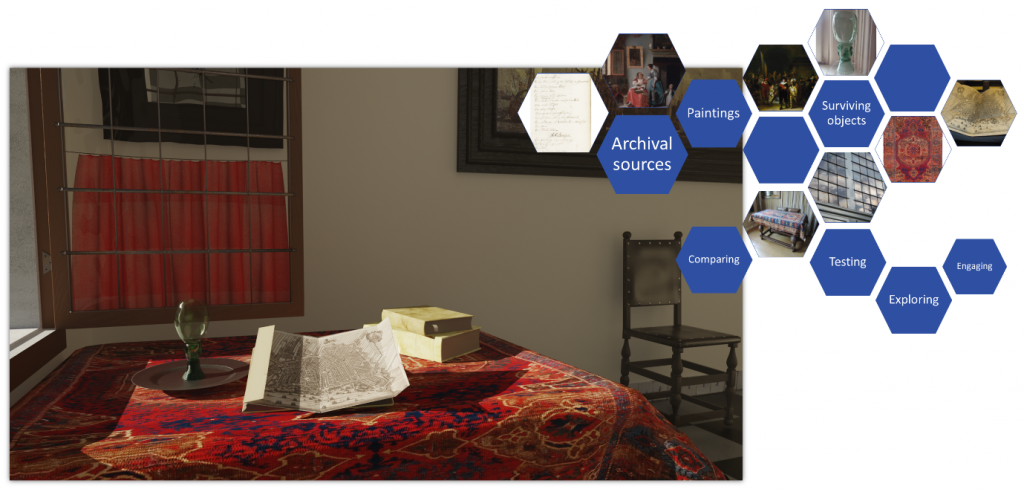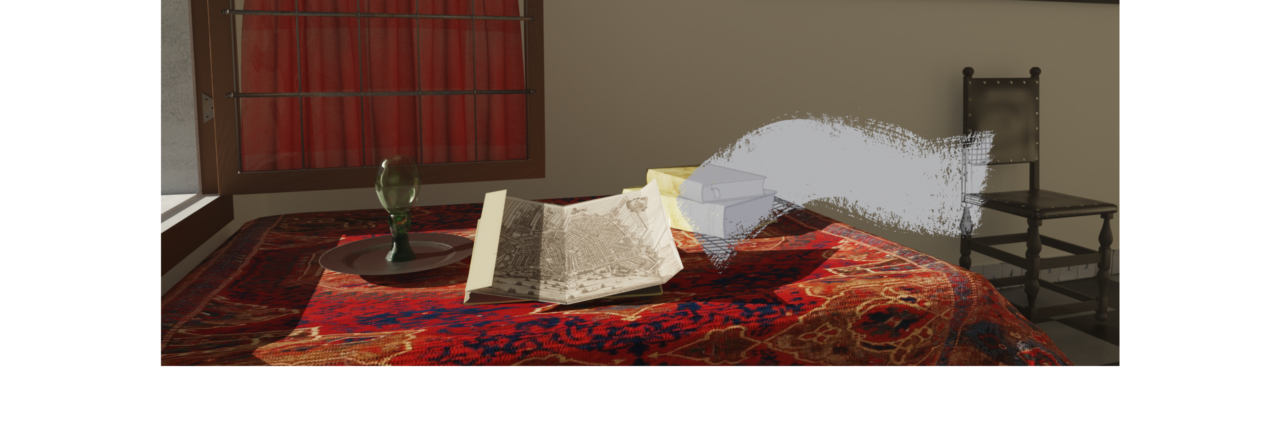Chiara Piccoli’s postdoc project investigates how individuals created, used, displayed and experienced cultural goods in their homes during the Dutch Golden Age by developing virtual reconstructions of a selection of domestic interiors. These three-dimensional (3D) models aim to act as data integration and hypothesis visualization platforms to spatially connect, manage and research the rich and heterogeneous data sources on this period. The project aims also to deal with the modelling process in a transparent way and, when possible, to visualize changes through time (4D).
The sources Chiara relies on include: the information provided by notary acts (e.g. probate inventories, which listed and valued the personal possessions at the time of the owner’s death); ego-documents such as diaries and letters; surviving material culture; structural information from the houses’ building history; comparisons with contemporary images and physically reconstructed interiors of the period.
By combining this interdisciplinary dataset, this project will contribute to our understanding of the socio-cultural and spatial context of the production and consumption of the Amsterdam creative industries. Moreover, it will aid the development of a methodology to handle uncertainty and annotations in 3D visualizations.

Researcher: Chiara Piccoli
Read more about Visualizing Amsterdam Interiors:
Visualizing domestic interiors in 17th century Amsterdam: 3D/4D data integration and hypothesis testing platforms
Private libraries as a microcosmos of knowledge: Travelling through time and space with Pieter de Graeff’s book collection
Dealing with multidimensional uncertainty: The house of the painter Gillis van Coninxloo

